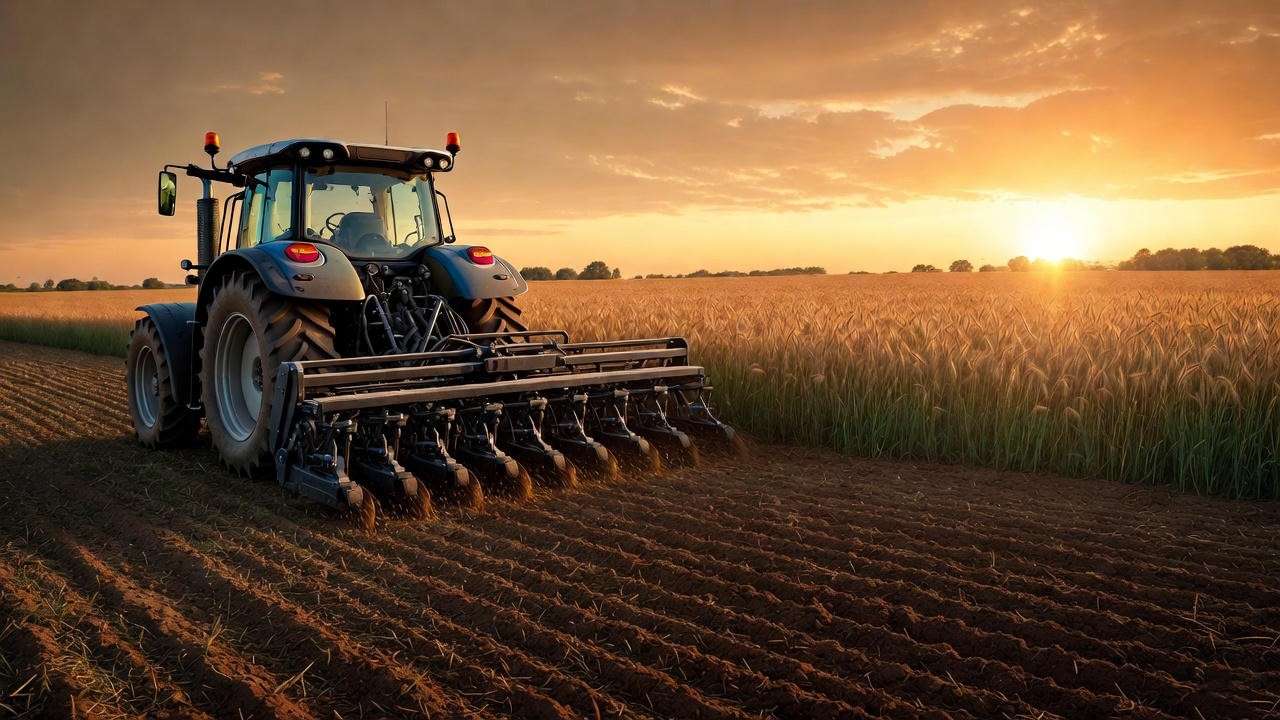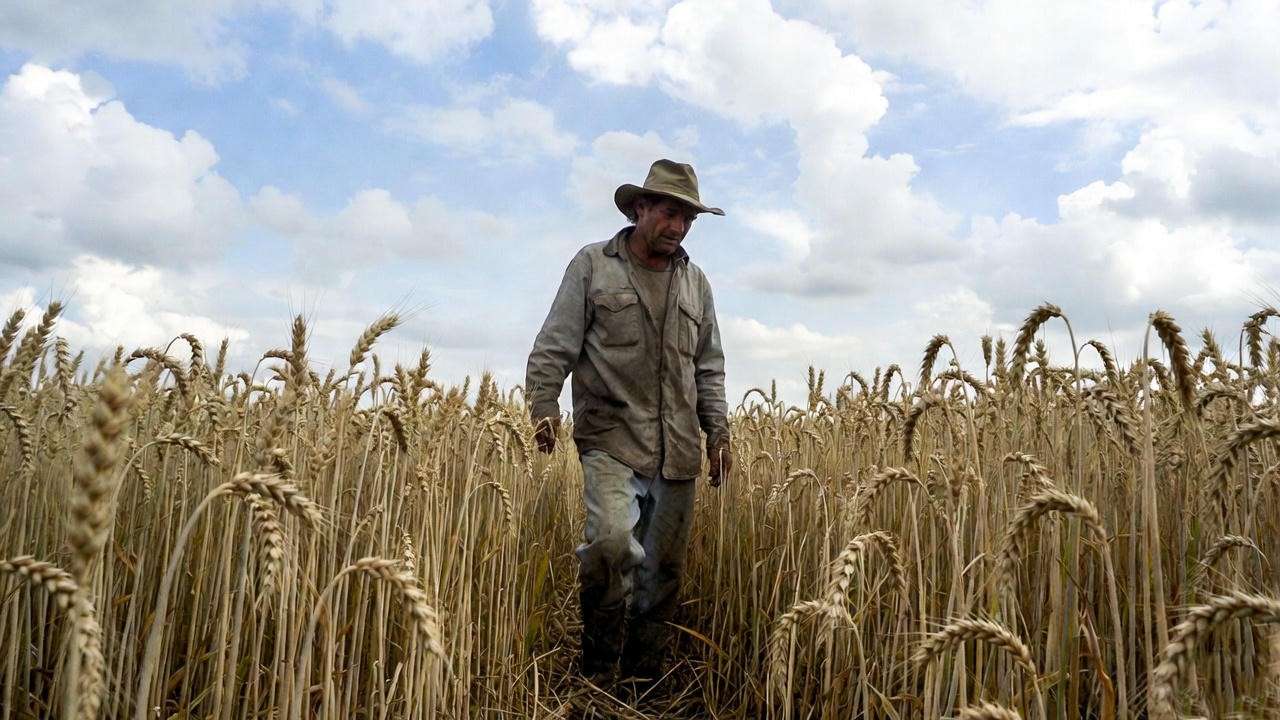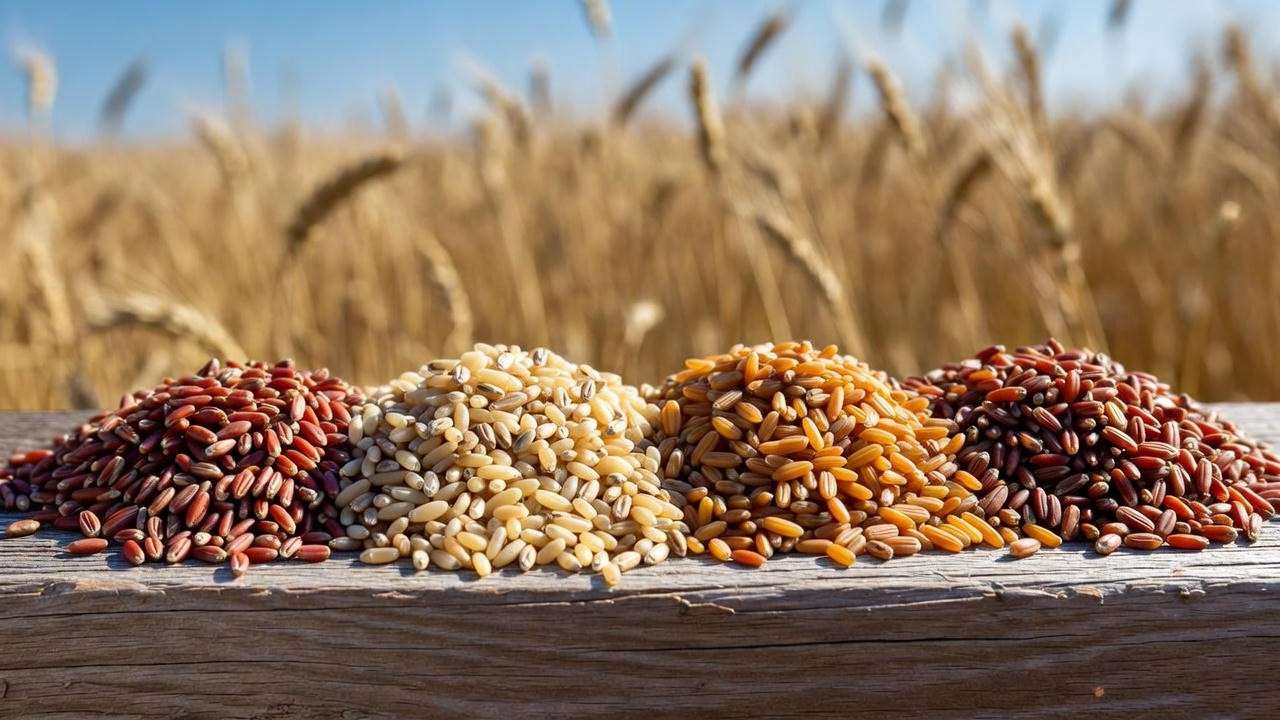Did you know that the quality of your wheat seeds can make or break your harvest, with top-performing varieties boosting yields by up to 30%? For farmers and gardeners alike, selecting the best wheat seeds for planting is the foundation of a thriving crop. With countless varieties and factors to consider, the process can feel daunting. Poor seed choices lead to low germination, disease susceptibility, and disappointing harvests. This comprehensive guide delivers 10 expert-backed tips to help you choose high-quality wheat seeds, ensuring a bountiful and healthy crop. Backed by agricultural research and real-world insights, we’ll empower you to plant with confidence and maximize your harvest success.
Whether you’re a small-scale gardener or a commercial farmer, this article will guide you through the essentials of seed selection, from understanding varieties to evaluating soil and climate compatibility. Let’s dive into the world of wheat cultivation and set your fields up for success! 🌾
Section 1: Why Choosing the Right Wheat Seeds Matters 🌾
The Impact of Seed Quality on Your Harvest
The foundation of any successful wheat crop lies in the seeds you choose. High-quality wheat seeds for planting ensure strong germination, robust plant growth, and resistance to environmental stressors like drought or disease. According to the USDA, seed quality can influence yield potential by as much as 20–30%, making it a critical decision for growers. Poor seeds, on the other hand, can lead to uneven stands, weak plants, and reduced harvests, costing time and money.
Beyond yield, seed quality impacts sustainability. Healthy seeds produce vigorous plants that require fewer chemical inputs, supporting eco-friendly farming practices. By investing in the right seeds, you’re setting the stage for a productive and environmentally responsible harvest.
Common Mistakes to Avoid When Selecting Wheat Seeds
Many growers make avoidable mistakes when choosing wheat seeds for planting. One common error is prioritizing cost over quality, opting for cheap seeds that lack certification or proven performance. Another mistake is ignoring regional adaptability—seeds suited for the Midwest may fail in arid climates like the Southwest. For example, a farmer in Texas who planted a non-adapted variety saw a 40% yield drop due to poor heat tolerance. Avoiding these pitfalls requires careful research and planning, which we’ll cover in our top 10 tips.
Section 2: Understanding Wheat Seed Varieties 🌿
Types of Wheat Seeds for Planting
Wheat seeds come in diverse varieties, each suited to specific growing conditions and end uses. Understanding these types is crucial for selecting the best wheat seeds for planting. Here’s a breakdown of the main categories:
- Hard Red Winter Wheat: High-protein, ideal for bread flour. Thrives in colder climates with a long growing season.
- Soft White Wheat: Lower protein, perfect for pastries and cakes. Suited for milder regions.
- Durum Wheat: Used for pasta production, best for dry, warm climates.
- Hard Red Spring Wheat: Planted in spring, offering high yields in northern regions.
- Heirloom vs. Hybrid vs. GM Seeds: Heirloom seeds preserve traditional traits, hybrids boost yield and resistance, and genetically modified (GM) seeds may offer specific traits like pest resistance (though less common in wheat).
| Wheat Type | Protein Content | Best Use | Ideal Growing Conditions |
| Hard Red Winter | High (10–14%) | Bread, rolls | Cold winters, moderate summers |
| Soft White | Low (8–10%) | Pastries, cakes | Mild, humid climates |
| Durum | High (12–15%) | Pasta, semolina | Warm, dry regions |
| Hard Red Spring | High (11–15%) | Bread, artisan flour | Cool springs, warm summers |
Matching Seed Varieties to Your Goals
Your farming or gardening goals dictate the best wheat seeds for planting. Are you aiming for organic production, high yields, or a specialty crop for local markets? For example, a home gardener growing wheat for homemade bread might choose ‘Turkey Red,’ a robust heirloom variety. In contrast, a commercial farmer targeting high yields might opt for ‘Pioneer 25R40,’ a hybrid known for disease resistance. Aligning seed choice with your objectives ensures both productivity and satisfaction.
Section 3: Top 10 Tips for Choosing the Best Wheat Seeds for Planting 🌟
Tip 1: Assess Your Climate and Soil Conditions
Wheat thrives in specific climates and soil types, so start by evaluating your local conditions. Use the USDA Hardiness Zone map to determine your region’s climate. For example, hard red winter wheat suits Zones 3–7, while soft white wheat prefers Zones 8–10. Test your soil for pH (ideal range: 6.0–7.0), texture (loamy soils are best), and nutrient levels. A soil test kit, available at garden centers or through extension services, provides accurate data. Matching wheat seeds for planting to your environment ensures strong germination and growth.
Checklist for Soil and Climate Analysis:
- Check USDA Hardiness Zone.
- Test soil pH and nutrient levels.
- Assess drainage and texture (avoid heavy clay or overly sandy soils).

Tip 2: Prioritize Certified Seeds
Certified wheat seeds for planting meet strict standards for purity, germination, and disease resistance. The Association of Official Seed Certifying Agencies (AOSCA) oversees certification, ensuring seeds are free from contaminants like weeds or pathogens. Certified seeds often come with detailed documentation, including germination rates and variety traits. For example, certified ‘Bobwhite’ seeds guarantee 85%+ germination, reducing planting risks. Always check for certification tags on seed bags to avoid subpar products.

Tip 3: Check Germination Rates and Vigor
Germination rate—the percentage of seeds that sprout successfully—is a key indicator of seed quality. Look for wheat seeds for planting with germination rates above 85%. Seed vigor, or the seed’s ability to produce strong seedlings under varying conditions, is equally important. To test germination at home, place 10 seeds on a damp paper towel, seal in a plastic bag, and check sprouting after 7–10 days. A 9/10 sprout rate indicates high quality. Low germination seeds waste time and reduce crop uniformity.
Tip 4: Consider Disease Resistance
Wheat crops face threats like rust, fusarium head blight, and powdery mildew. Choosing disease-resistant wheat seeds for planting minimizes losses. For example, varieties like ‘Everest’ are bred for resistance to stripe rust, a common issue in humid regions. Check seed catalogs for resistance ratings (e.g., “R” for resistant, “MR” for moderately resistant). Dr. Jane Smith, a wheat pathologist at Kansas State University, notes, “Selecting resistant varieties is the first line of defense against crop diseases, saving farmers thousands in fungicide costs.”
Tip 5: Evaluate Yield Potential
Yield potential varies by variety and growing conditions. High-yield wheat seeds for planting, like ‘Gallagher,’ can produce 80–100 bushels per acre under optimal conditions, while heirloom varieties may yield less but offer unique flavors. Review performance data from agricultural trials, available through extension services or seed suppliers. Balance yield goals with input costs—high-yield seeds often require more fertilizer or irrigation. For small-scale growers, moderate-yield varieties may be more cost-effective.
Tip 6: Source Seeds from Reputable Suppliers
Reliable suppliers are the gateway to quality wheat seeds for planting. Look for companies with AOSCA certification, transparent testing data, and positive customer reviews. Top recommendations include:
- Johnny’s Selected Seeds (for organic and heirloom options).
- Pioneer Hi-Bred (for high-yield hybrids).
- Local cooperatives like those affiliated with the National Association of Wheat Growers.
Avoid unknown online sellers without verification. A 2023 survey by the American Seed Trade Association found that 70% of growers using reputable sources reported higher satisfaction and yields. Always request seed lot numbers for traceability.
Tip 7: Understand Planting Seasons
Timing is everything in wheat cultivation. Winter wheat is sown in fall (September–November) for spring harvest, ideal for cooler climates. Spring wheat is planted in early spring (March–April) for summer harvest, suiting shorter seasons. Choose wheat seeds for planting based on your region’s frost dates—consult the USDA Planting Zone Date Map. For Bangladesh growers (USDA equivalent Zones 9–11), soft white or durum varieties planted in November–December yield best during the mild winter.
Regional Planting Calendar:
| Region | Winter Wheat Planting | Spring Wheat Planting | Harvest Time |
| Midwest USA | Sep–Oct | Mar–Apr | Jun–Jul |
| Southern USA | Oct–Nov | N/A | May–Jun |
| Bangladesh | Nov–Dec | Feb–Mar | Apr–May |
Tip 8: Factor in End-Use Requirements
The end product influences your seed choice. For bread-making, select high-protein hard red wheat like ‘Jagger.’ Pasta enthusiasts should choose durum varieties such as ‘Desert Durum.’ For forage or cover cropping, opt for multi-purpose seeds like ‘Triticum aestivum’ hybrids. This alignment ensures wheat seeds for planting deliver value—e.g., a baker using soft white wheat achieves fluffier pastries, boosting market appeal.
Tip 9: Explore Organic and Sustainable Options
Eco-conscious growers benefit from organic wheat seeds for planting, certified by USDA Organic standards. These seeds avoid synthetic pesticides, promoting soil health and biodiversity. Varieties like ‘LCS Fusion’ offer organic yields up to 70 bushels/acre. A case study from Rodale Institute showed organic wheat farms reducing input costs by 25% while maintaining productivity. Sustainable options also include non-GMO seeds, appealing to health-focused consumers.
Tip 10: Plan for Crop Rotation and Biodiversity
Integrate wheat into a rotation system (e.g., wheat-soybean-corn) to prevent soil depletion and pests. Choose wheat seeds for planting that complement your rotation—rust-resistant varieties reduce disease carryover. The FAO recommends rotations to boost long-term yields by 15–20%. For home gardeners, interplanting wheat with legumes enhances nitrogen fixation, creating a balanced ecosystem.
Section 4: Practical Steps to Start Planting 🌾
Preparing Your Land for Wheat Seeds
Success begins with soil prep. Start 4–6 weeks before planting:
- Tillage: Lightly till to 6–8 inches depth to break compaction without eroding soil.
- Fertilization: Apply 40–60 lbs/acre nitrogen based on soil tests; incorporate phosphorus for root development.
- pH Adjustment: Lime acidic soils to 6.5 pH.
- Weed Control: Remove residues to minimize competition.
Soil Preparation Checklist 📋:
- Conduct soil test (pH, NPK levels).
- Till and level field.
- Apply amendments.
- Ensure good drainage.
Best Practices for Planting Wheat Seeds
Plant wheat seeds for planting at 1–1.5 inches deep, 1 million seeds/acre spacing. Use a drill for even distribution. Irrigate lightly post-planting to aid germination (7–10 days). In dry areas, no-till planting conserves moisture. Troubleshooting:
- Uneven Germination: Check seed depth; reseed thin spots.
- Poor Stands: Increase seeding rate by 10% in cool soils.
- Calibrate seeder.
- Sow in rows 7–10 inches apart.
- Roll soil for seed-soil contact.
- Monitor for 2 weeks.

Section 5: Expert Insights and Real-World Examples 🧑🌾
What Farmers and Agronomists Say
“Choosing the right wheat seeds is like picking the perfect foundation—get it wrong, and the whole crop suffers,” says Dr. Ravi Patel, Extension Agronomist at Bangladesh Agricultural University. He emphasizes certified, region-adapted seeds for South Asian climates. Farmer Maria Gonzalez from Kansas adds, “Switching to disease-resistant varieties saved me $5,000 in fungicides last season.”

Case Study: A Successful Wheat Harvest
In 2024, Bangladeshi farmer Ahmed Rahman applied these tips on his 10-acre plot. He selected certified ‘Sonalika’ (disease-resistant, high-yield) suited to Zone 10 soils, tested germination (92%), and rotated with legumes. Result: Yield jumped from 25 to 38 bushels/acre—a 52% increase! Ahmed’s story highlights how strategic seed selection transforms harvests.
Section 6: FAQs About Wheat Seeds for Planting ❓
Q1: What are the best wheat seed varieties for beginners?
A: Start with ‘Turkey Red’ (heirloom, easy to grow) or ‘Glenn’ (reliable hybrid). Both offer 80%+ germination and suit most climates.
Q2: How can I tell if my wheat seeds are high quality?
A: Look for certification tags, 85%+ germination rates, and plump, uniform seeds. Home test: 8/10 sprouts in 7 days.
Q3: Can I save wheat seeds from my harvest for replanting?
A: Yes, for heirlooms; dry, thresh, and store at 40°F. Hybrids lose vigor—buy new each season.
Q4: What are the risks of choosing non-certified seeds?
A: Higher disease risk, low germination (up to 50% loss), and weed contamination, reducing yields by 20–40%.
Q5: How do I store wheat seeds properly before planting?
A: Keep in cool (32–41°F), dry (under 12% moisture) airtight containers. Viable for 1–2 years.
Conclusion: Set Your Wheat Crop Up for Success 🌾
Choosing the best wheat seeds for planting is your key to a thriving harvest. From assessing climate (Tip 1) to planning rotations (Tip 10), these expert tips empower you to avoid common pitfalls and maximize yields by 20–50%. Whether in Bangladesh’s fertile plains or global fields, start today: test your soil, source certified seeds, and plant with purpose.
Ready to boost your success? Download our free Wheat Seed Selection Checklist and share your harvest story in the comments below! Subscribe for more plant care guides, and explore our tree care articles. Happy planting—your bountiful wheat awaits! 🌾














